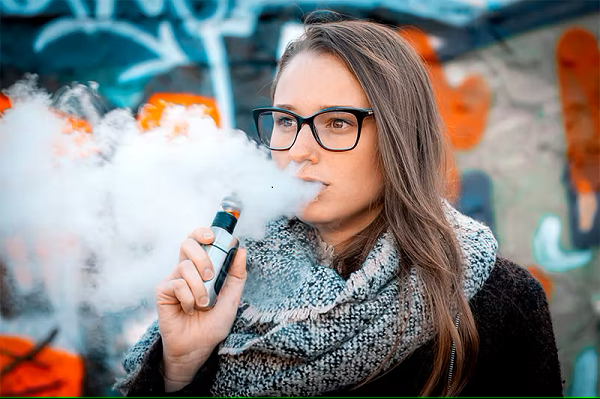| Section | Link to Section |
|---|---|
| School-Age Vaping | School-Age Vaping: An Epidemic Or A Fad? |
| Disposable Flavors | Disposable Vapes And Flavors Are Available. |
Despite fears by health officials and tobacco control groups that flavored disposable vapes would spark a new "epidemic" of child vaping, fewer American students vaped in 2023 than the previous year. The reduction continued a pattern that began in 2019 when teenage vaping peaked.
The findings are based on preliminary data from the National Youth Tobacco Survey (NYTS), which were posted today in the CDC Morbidity and Mortality Weekly Report. The NYTS, which is done yearly by the CDC and the FDA Center for Tobacco Products (CTP), was administered to a representative sample of 22,069 American middle school (grades 6-8) and high school (grades 9-12) students from March 9 to June 16. The full findings will be disclosed before the conclusion of the year.
Public health officials will not share the narrative of reduced teenage vaping. The FDA and CDC, like they did following last year's optimistic NYTS results, will continue to express significant worries about flavored goods "targeted at youth," disposable vapes, and anything that contributes to the notion of a deadly "epidemic" of teenage consumption.
School-Age Vaping: An Epidemic Or A Fad?
Middle and high school students' vaping rates have dropped by 61.5 percent from their peak in 2019. In 2023, the percentage of kids in grades 6-12 who vaped in the previous 30 days was just 7.7 percent, down from 20.0 percent in 2019, when allegations that vaping had "hooked a new generation" to nicotine were heard every day.
Since 2019, when more than a quarter of high school pupils polled had tried vaping in the previous 30 days, high school vaping has decreased by 63.6 percent (27.5 to 10.0%). Middle school past-30 day utilization grew somewhat this year (from 3.6 percent in 2022 to 4.6 percent), while it has decreased overall by 56.2 percent since 2019.
In 2019, many people thought that teenage vaping was a juggernaut of risky behavior that could only be controlled by strict rules and restrictions. In retrospect, it may have been more of a teen fad—more upsetting to parents and instructors than hula-hoops or Tamagotchis, but equally powered by the enigmatic variables that drive any suddenly popular hobby.
It's worth noting that, even at its peak, over 70% of high school students had never tried vaping.
High school vaping has now dropped to its lowest level (10.0 percent) since 2013, while smoking cigarettes has practically gone from classrooms entirely.
The past-30-day smoking rate among all grades was 1.6 percent, the third year in a row it has remained below 2.0 percent, and among high school students, it was only 1.9 percent. Even fewer teens used smokeless tobacco (1.2%) or nicotine pouches (1.5%).
Disposable Vapes And Flavors Are Available.
Disposable vapes were the most popular devices among adolescent users, which probably says more about the market than about youth. Kids vape whatever is available, and fruit-flavored disposables are the most popular among vapers of all ages, making them the most widely accessible.
Disposables were the most often utilized device type, accounting for 60.7 percent, up from 55.3 percent the previous year. Pod vapes' popularity dropped from 25.2 percent in 2022 to 16.1 percent this year. Furthermore, the use of open-system vapes (refillable devices) decreased from 6.7 percent last year to 5.9 percent in 2023.
Surprisingly, 17.3 percent of prior 30-day users had no idea what type of vape they had used, up from 12.8 percent last year. That result is seldom covered by major news organizations, but it reveals a lot about the lack of commitment to vaping demonstrated by roughly one in every five people who report doing so.
Among the brands utilized, Elf Bar dominated the competition. It was mentioned in 56.7% of poll replies (users may select multiple answers), significantly outnumbering second-place finisher "Not sure or don't know" (23.9%). Esco Bar was third (21.6 percent), Vuse was fourth (20.7 percent), "Some other brand not listed" was fifth (17.3 percent), and lowly Juul—once the leader in illegal adolescent usage—finished sixth (16.5 percent).
Notably, Puff Bar—the NYTS brand leader in both 2021 and 2022—didn't make this year's list of favorite brands. That is something the CDC and FDA should become used to, as disposable manufacturers change the names and look of their goods to avoid prosecution. Now that producers and distributors of "unauthorized" disposables are being pursued not just by the FDA, but also by their Big Tobacco vape competitors, anticipate the disposable brand landscape to change every few months.
Fruit tastes were the most popular among NYTS participants, with 63.4 percent saying they had used them in the previous 30 days. "Candy, desserts, or other sweets" came in second at 35.0 percent, with mint and menthol also scoring more than 20 percent. "Unflavored" came in fifth place (11.6 percent), and it's worth noting that bored pupils may simply goof about with their replies. Unflavored vapes are unusual and unlikely to be popular at mainstream vape shops.
A substantial proportion (57.9 percent) of adolescent vapers reported using "Ice" products, which corresponds nearly exactly to the number who reported using disposables. Many disposables use the adjective "ice" in the taste name to indicate menthol or menthol-like cooling.
The government agencies will surely highlight the popularity of non-tobacco vape flavors in their press releases, saying that tastes "drive" child vaping product usage. In truth, flavored vapes are the favored goods among adult users, while children are compelled to use whatever is available.






